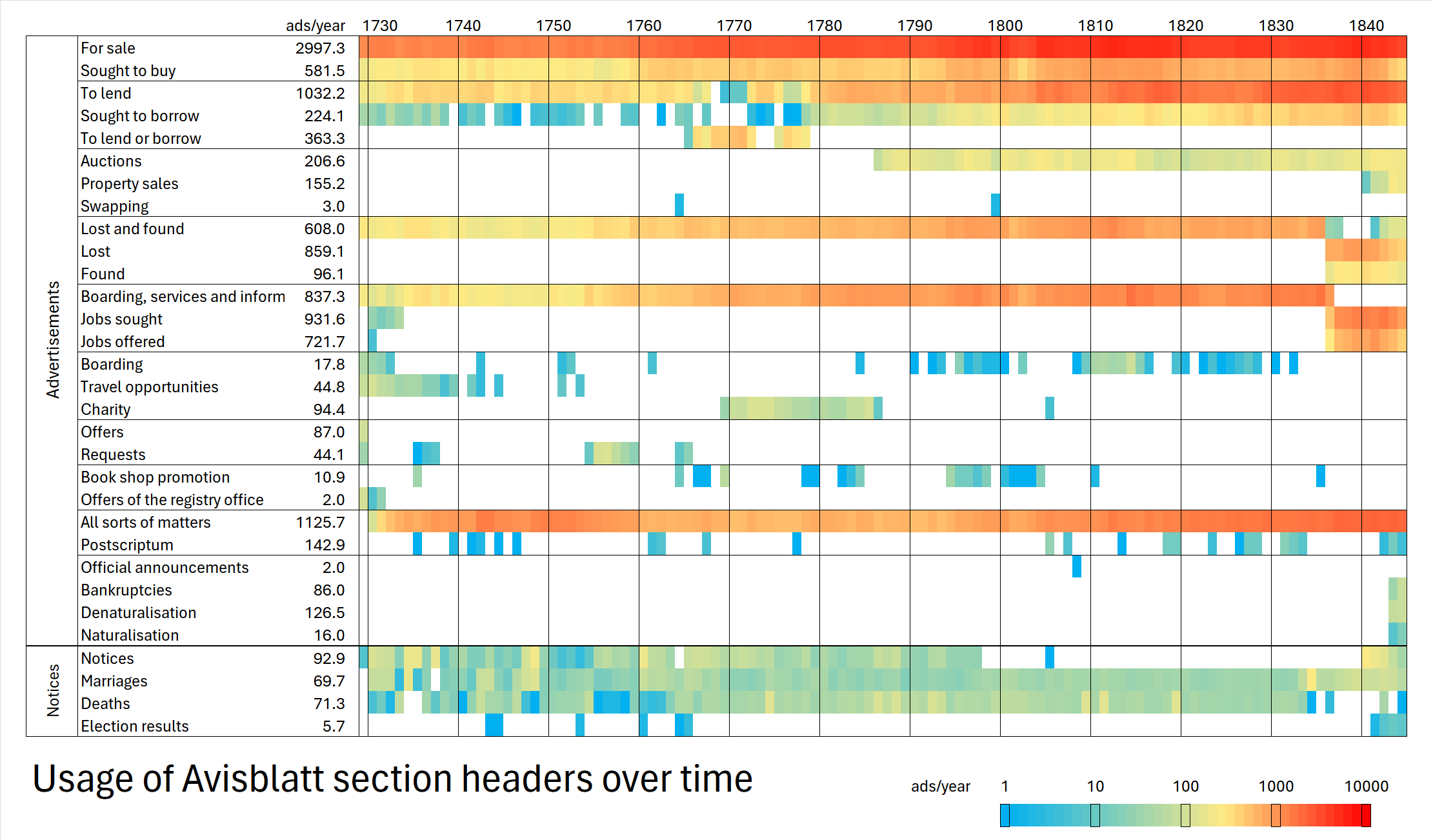The processing was done with a view to analyse the ads as mass data with statistical and NLP (Natural Language Processing) methods, not for precisely finding individual ads. When searching the database for individual or a handful of advertisements, the following should therefore be noted:
1. Due to the enormous number of ads, their text was not transcribed manually, but recognised using the AI-supported platform Transkribus. Therefore, occasional text recognition errors unavoidable.
2. The tags/keywords were not assigned manually, but via algorithmic procedures. This inevitably leads to errors of the first and second kind (some relevant advertisements are not recognised and tagged, some nonrelevant advertisements are wrongly keyworded). Within the framework of statistical analysis of mass data, such errors are controllable and tolerable. When searching for individual ads, such errors are noticeable and sometimes irritating. The limited discriminatory power of the algorithmically assigned keywords is the price paid for the fact that the 932,000 ads, notices and section headings could be keyworded across the board.
Each issue of the Avisblatt is divided into sections. With regard to the most common headings, the subdivision is surprisingly stable over time, with new headings occasionally being introduced and others abandoned.
In particular, from the end of 1837 onwards, differentiation and expansion took place, as the overview below illustrates. If a rubric was used in a year, it is colour-coded with regard to the number of advertisements, from blue (only a few) to green (dozens) and yellow (hundreds) to red (thousands).
The bulk of the ads (over 90%) were divided into seven main headings that have remained very stable over time:
1. offers for sale
2. wanted to buy
3. rental offers
4. loan requests
5. job advertisements and services (at times including boarding, but this was often classified separately)
6. lost and found items
7. all kinds of news (miscellaneous)
The latter section often also contains other advertisements that could be sorted under the first six headings. In addition, advertisements submitted late were often placed at the end of the issue by "P.S." or "supplement" - usually with an indication of the rubric to which they were added, so that the advertisements are also assigned to that rubric; in the search mask, only those advertisements for which this is not the case can be found under "supplements".
When using the search mask, it should also be noted that rubrics have been differentiated or converged at times:
For example, the rubric "lost and found" yields comparatively few hits for the years after 1837, because then a distinction was usually made between "lost" and "found"; in turn, these rubrics yield no hits for earlier years. From the mid-1760s to the late 1770s, "To lend" and "Sought to borrow" were often, but not always merged to "To lend or borrow", which can lead to unexpected search results. Boarding is sometimes listed separately, sometimes jointly with job and service advertisements. Notices ("Merkwürdigkeiten") are sometimes subdivided into weddings, deaths and election results, but sometimes not; and so on.
